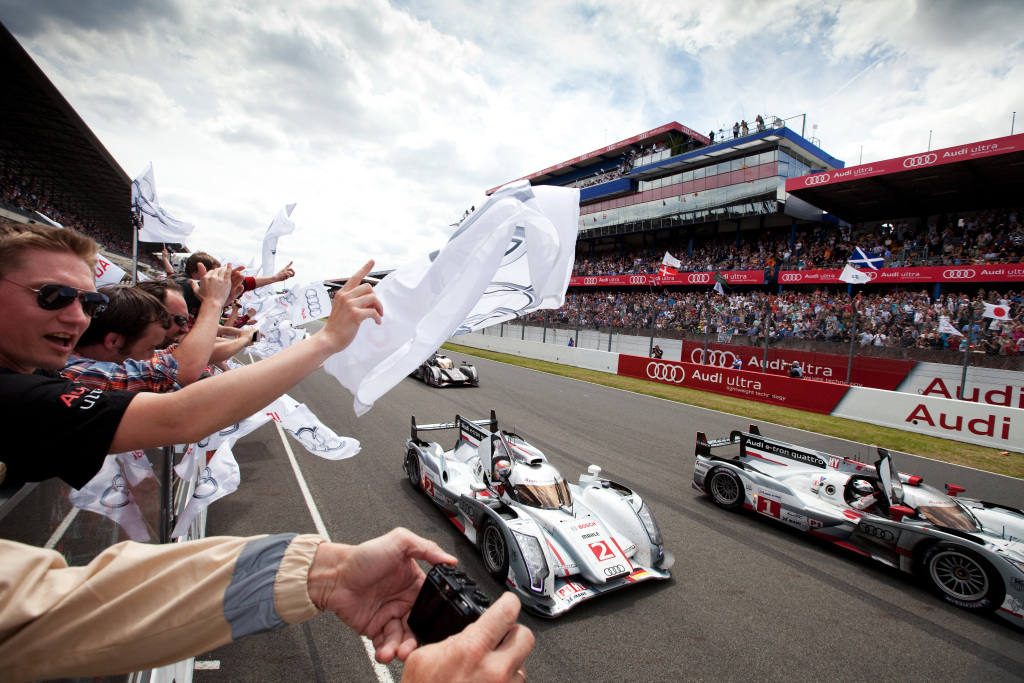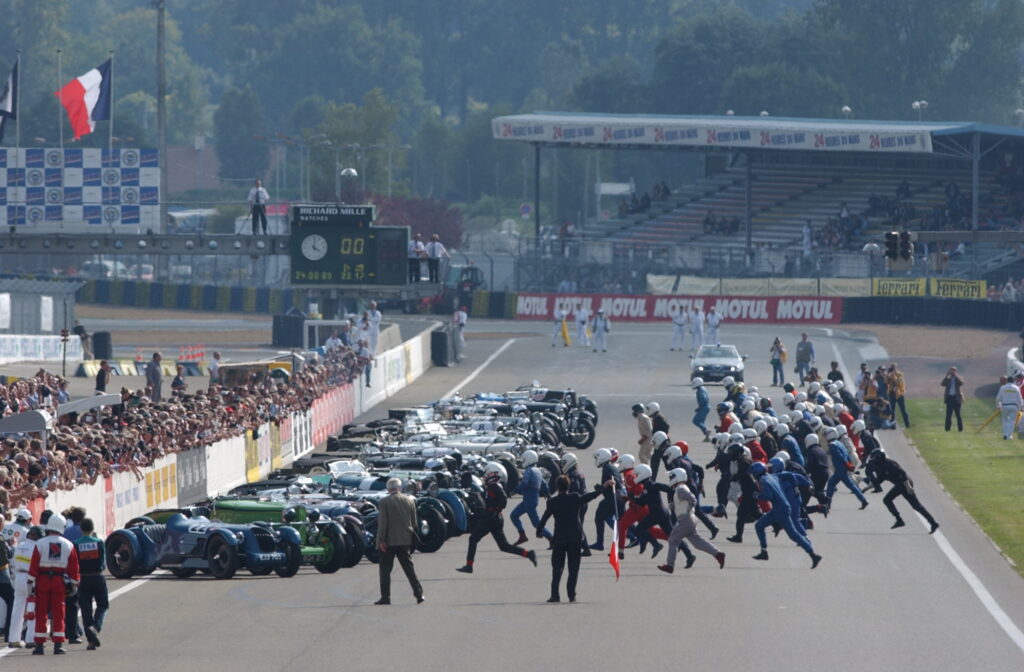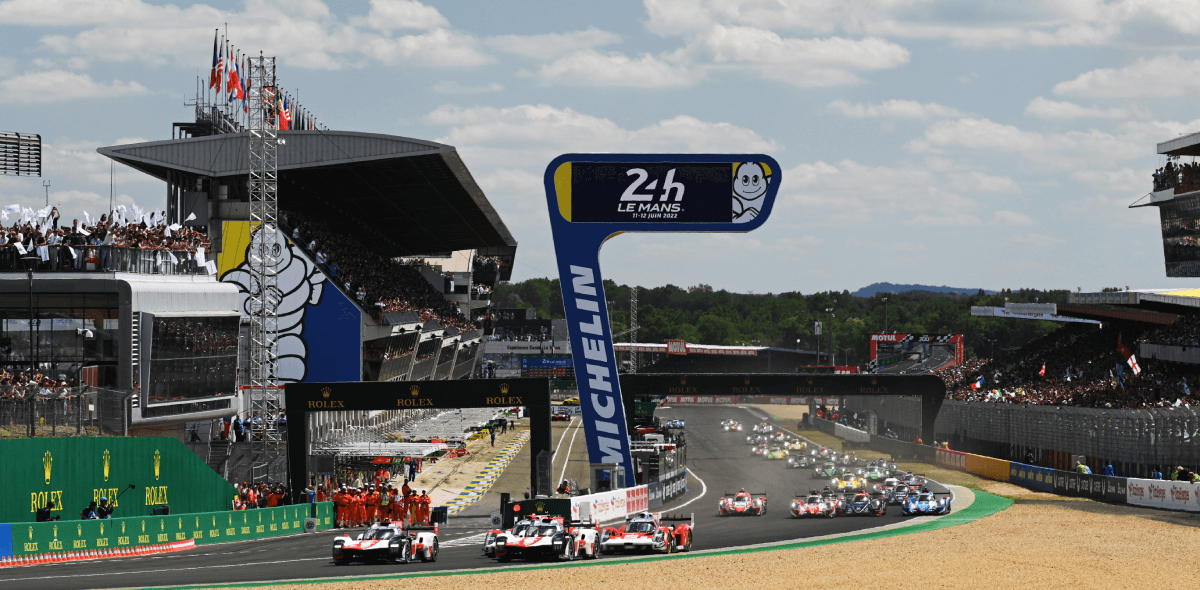The most iconic endurance race of all time is almost upon us. For over a hundred years, the eyes of the motorsport world have fallen on this small northwestern French city as the greatest manufacturers and drivers across the globe take on the ultimate day-long racing challenge.
In this guide, we’ll take a closer look at the famous Circuit de la Sarthe, exploring the layout and discovering some incredible stats, including the fastest lap time ever recorded and the greatest distance covered in a 24-hour period.
Planning to attend 24 Hours of Le Mans in 2026? Book your tickets and packages now.
Map of Le Mans race circuit

- Track length: 8.467 miles (13.626km) long
- Average temperature during racing weekend: 23 C
- Record for greatest distance covered: 5410.713 km (397 laps) in 2010 by drivers Romain Dumas, Timo Bernhard and Mike Rockenfeller in the Audi R15 TDI-plus
- Record for fastest lap: 3:14.791 by Kamui Kobayashi in a Toyota TS050 Hybrid in 2017
Where is the Le Mans circuit?
Circuit de la Sarthe is located in the Pays de la Loire region in northwestern France, approximately 129 miles (208km) southwest of central Paris.
How long is the Le Mans track?
One lap of the impressive Le Mans circuit is 8.467 miles (13.626km) long. The most laps ever achieved within 24 hours is 397 in the winning Audi R15+ TDI car at the 2010 race.

Le Mans landmarks and corner names
- Dunlop Bridge and Curves – the most famous Le Mans landmark of all, this iconic footbridge over the track and lends its name to the nearby corner. Leads into a 7% climb from the pit straight.
- Mulsanne Straight – The legendary 3.4 mile (5.5km) straight which has seen its fair share of accidents and crashes over the years, with fatigued drivers misjudging the sharp bend ahead.
- The Hump and Mulsanne Corner – For safety reasons, the hump towards the end of the Mulsanne Straight was shaved to help reduce the number of accidents coming up to Mulsanne Corner where cars have to reduce their speed from 300kph to 75kph in the blink of an eye. This area of the circuit is a crowd favourite, due to the high drama that frequently occurs at this spot.
- Tertre Rouge Corner – a particularly challenging corner linking the track to the infamous Mulsanne Straight. Named after the reddish soil in this area.
- Porsche Curves – a driver favourite, this series of sweeping, banked corners introduced in 1972 is particularly tricky to navigate.
- Forest Esses – a series of tight turns dating back to 1932, named after the pine trees that used to line this part of the track.
- Indianapolis Corner – the only section unchanged since 1923, this bend is famed for the heavy braking required to navigate it successfully.
- Arnage Corner – this unforgiving 90-degree right-hand turn is the slowest on the circuit and an Achilles heel for many drivers.
- Chicanes – two artificial chicanes which were added in 1990 to reduce the dangerously high speeds on the Mulsanne Straight.
- Pit Straight – the start/finish straight running through the city of Le Mans itself.
How many Le Mans race circuit track changes have there been?
The circuit has seen many changes over its 100-year history, including additions such as the Dunlop Curve and Forest Esses in 1932, the Porsche Curves in 1972, chicanes on the Mulsanne Straight in 1990 and run-off area improvements at corners like Tertre Rouge in the 2000s to accommodate increasing speeds and reduce the number of accidents.
What other races are held on the Le Mans circuit?
Apart from the 24-hour endurance race, the Circuit de la Sarthe also hosts the Le Mans Classic, as well as the 24 Hours of Le Mans for motorcycles.

Interesting facts about the Le Mans 24h race circuit
- The first portion of the Circuit de la Sarthe was created in 1923 by combining existing public roads with a race track.
- The famous Mulsanne Straight is 4.2 miles (6.8km) long, making it one of the longest straights in motorsport.
- The circuit includes permanent track sections and public roads which are temporarily closed for the race.
- The race and the circuit are renowned for being a testing ground for evolving automotive technology, especially in terms of endurance and efficiency.
- The film 1971 ‘Le Mans’ starring Steve McQueen uses actual footage from the 1970 race.
How to buy tickets to the Le Mans 24h
Inspired to visit this iconic track and witness the ultimate test of endurance for yourself in 2026? Choose from a range of ticket and accommodation packages including camping, glamping and more. Tickets are selling fast! Book your Le Mans package today to avoid disappointment.
